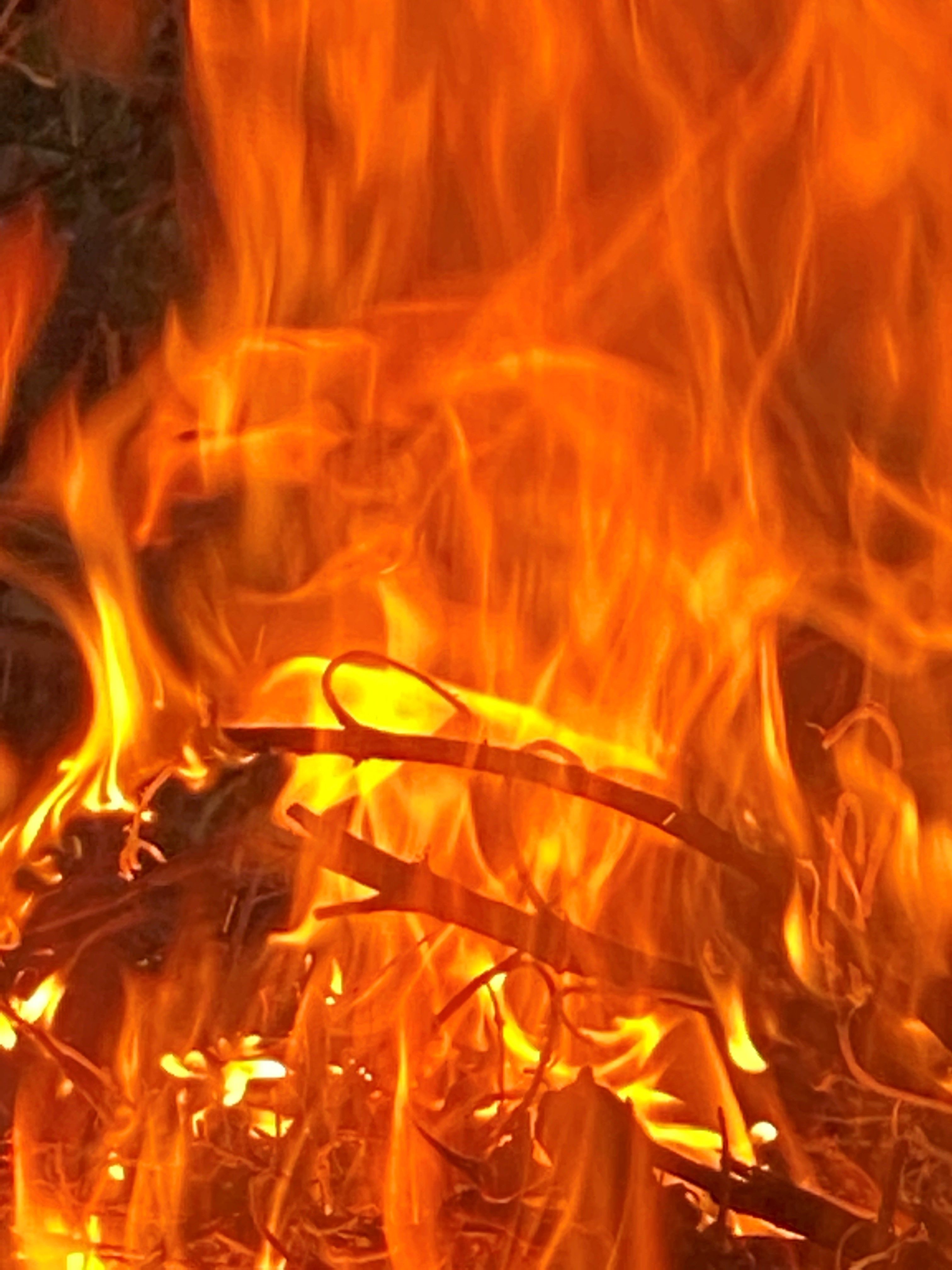Home/Curriculum resources/Fire in song/Fire in Yolngu culture
Learning Area:
The Arts
Year levels:
Level 5, Level 6

Fire in Yolngu culture
This case study is a part of the Fire in song resource.
Fire up close. Mornington Island, Lardil country. Photographer: Joe Sambono. Source: Ngarrngga. © Joe Sambono 2023. Used with permission
The story of fire is explained in detail by the Buku Larrnggay Mulka Art Centre as follows:
“Fire is as basic as water and land to the Gumatj, one of the largest clans. Fire in ancestral times scorched the ground where the creation ancestors had gathered to enact the law that was the secret knowledge that held the power. This was spread to other Gumatj lands carried by various means across the country imbued by the fire.”
“In ancestral times, the leaders of Yirritja moiety clans used fire for the first time during a ceremony at Ngalarrwuy in Gumatj country. This came about as fire brought to the Madarrpa clan country by Bäru, the ancestral crocodile, spread north and swept through the ceremonial ground. From this ceremonial ground, the fire spread further to other sites. Various ancestral animals were affected and reacted in different ways. These animals became sacred totems of the Gumatj people and the areas associated with these events became important sites.”
“The fire spread inland from the ceremonial ground and burnt the nest of Wangurra (Bandicoot) forcing him to hide in a hollow log (larrakitj) to save himself. Djirrikitj, the Quail, picked up a burning twig from this fire and flew away with it, dropping it at Matamata. There is a large paperbark swamp at Matamata, where native honey bees live. Fire from the burning twig dropped by Djirrikitj took hold of the tall grass in the swamp area and the native bees fled to Djiliwirri in Gupapuyŋu clan country. Thus, Gupapuyŋu honey and Gumatj quail are linked through these ancestral events and also refer to a relationship between these two clans, which is represented in ceremony.”
“In artworks, the designs are closely interlinked to both the Ancestral stories of fire and their associated songs. The Gumatj clan design associated with these events, a diamond design, represents fire: the red flames, the white smoke and ash, the black charcoal, and the yellow embers. All the clans who own connected parts of this sequence of Ancestral events about fire share variations of this diamond design.” 0